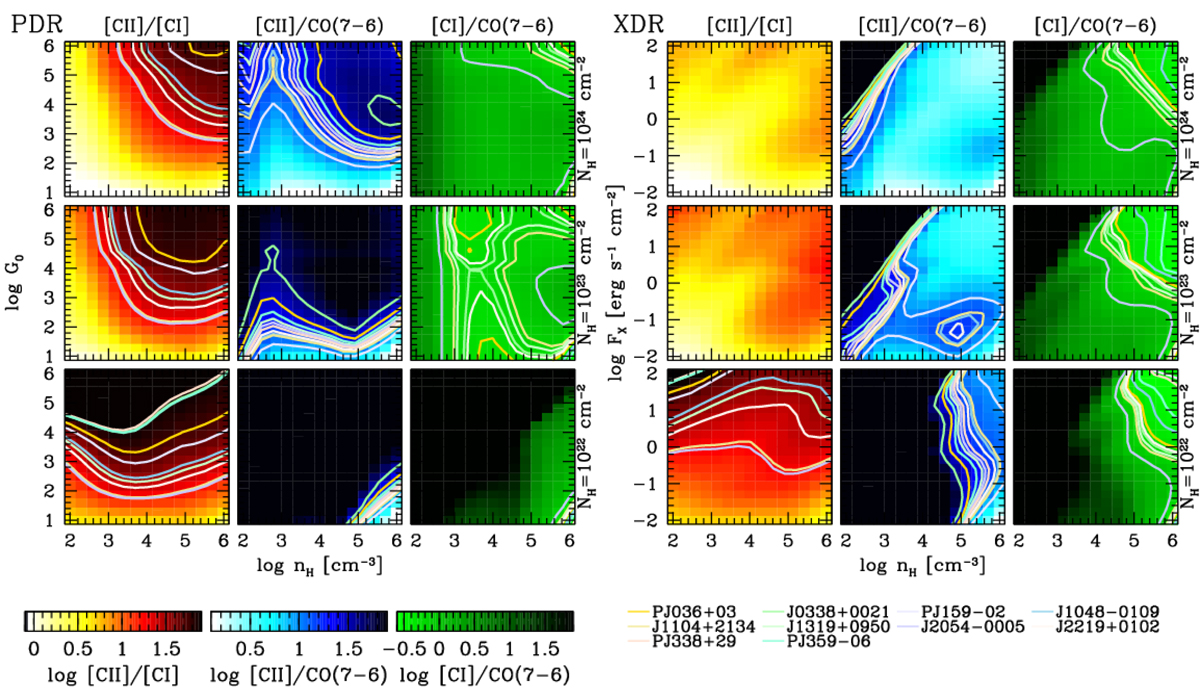Fig. 6.

Download original image
Luminosity line ratios predicted in the context of PDR and XDR models, as a function of column density, gas density, and strength of the incident radiation field (see text for details). The contours show the ratios measured in each source in our sample, color coded as shown in the legend. XDR models can reproduce the observed high [C II]/[C I] ratios only at low column densities, NH ≲ 1022 cm−2, whereas PDR models are compatible with the observed constraints over a wider range of parameters. The relatively low [C II]/CO(7–6) ratio observed in the targeted quasars is suggestive of typically large column densities, NH ≳ 1023 cm−2 for both PDR and XDR environments. Finally, the low observed [C I]/CO(7–6) ratios point to a high density nH ≳ 103 (105) cm−3 in PDRs (XDRs). Overall, a dense (nH > 103 cm−3) gas cloud with column densities of NH ∼ 1023 cm−2 impinged by UV radiation from newborn stars appears to best describe the observed line ratios. However, we stress that no single model accurately reproduces simultaneously all of the observed line ratios, thus suggesting that a single cloud is too simplistic a description of the observed phenomenology.
Current usage metrics show cumulative count of Article Views (full-text article views including HTML views, PDF and ePub downloads, according to the available data) and Abstracts Views on Vision4Press platform.
Data correspond to usage on the plateform after 2015. The current usage metrics is available 48-96 hours after online publication and is updated daily on week days.
Initial download of the metrics may take a while.


